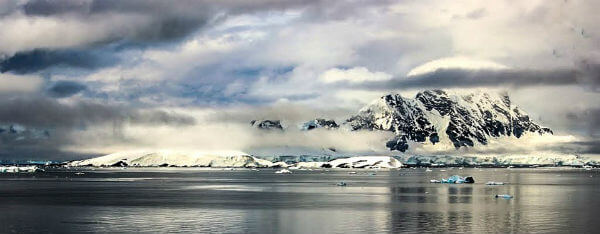
National Geographic reports: Seen from above, the Pine Island Ice Shelf is a slow-motion train wreck. Its buckled surface is scarred by thousands of large crevasses. Its edges are shredded by rifts a quarter mile across. In 2015 and 2016 a 225-square-mile chunk of it broke off the end and drifted away on the Amundsen Sea. The water there has warmed by more than a degree Fahrenheit over the past few decades, and the rate at which ice is melting and calving has quadrupled.
On the Antarctic Peninsula, the warming has been far greater—nearly five degrees on average. That’s why a Delaware-size iceberg is poised to break off the Larsen C Ice Shelf and why smaller ice shelves on the peninsula have long since disintegrated entirely into the waters of the Weddell Sea. But around the Amundsen Sea, a thousand miles to the southwest on the Pacific coast of Antarctica, the glaciers are far larger and the stakes far higher. They affect the entire planet.
The Pine Island Ice Shelf is the floating terminus of the Pine Island Glacier, one of several large glaciers that empty into the Amundsen Sea. Together they drain a much larger dome of ice called the West Antarctic Ice Sheet, which is up to two and a half miles thick and covers an area twice the size of Texas. The ice sheet is draped over a series of islands, but most of it rests on the floor of a basin that dips more than 5,000 feet below sea level. That makes it especially vulnerable to the warming ocean. If all that vulnerable ice were to become unmoored, break into pieces, and float away, as researchers increasingly believe it might, it would raise sea level by roughly 10 feet, drowning coasts around the world. [Continue reading…]

